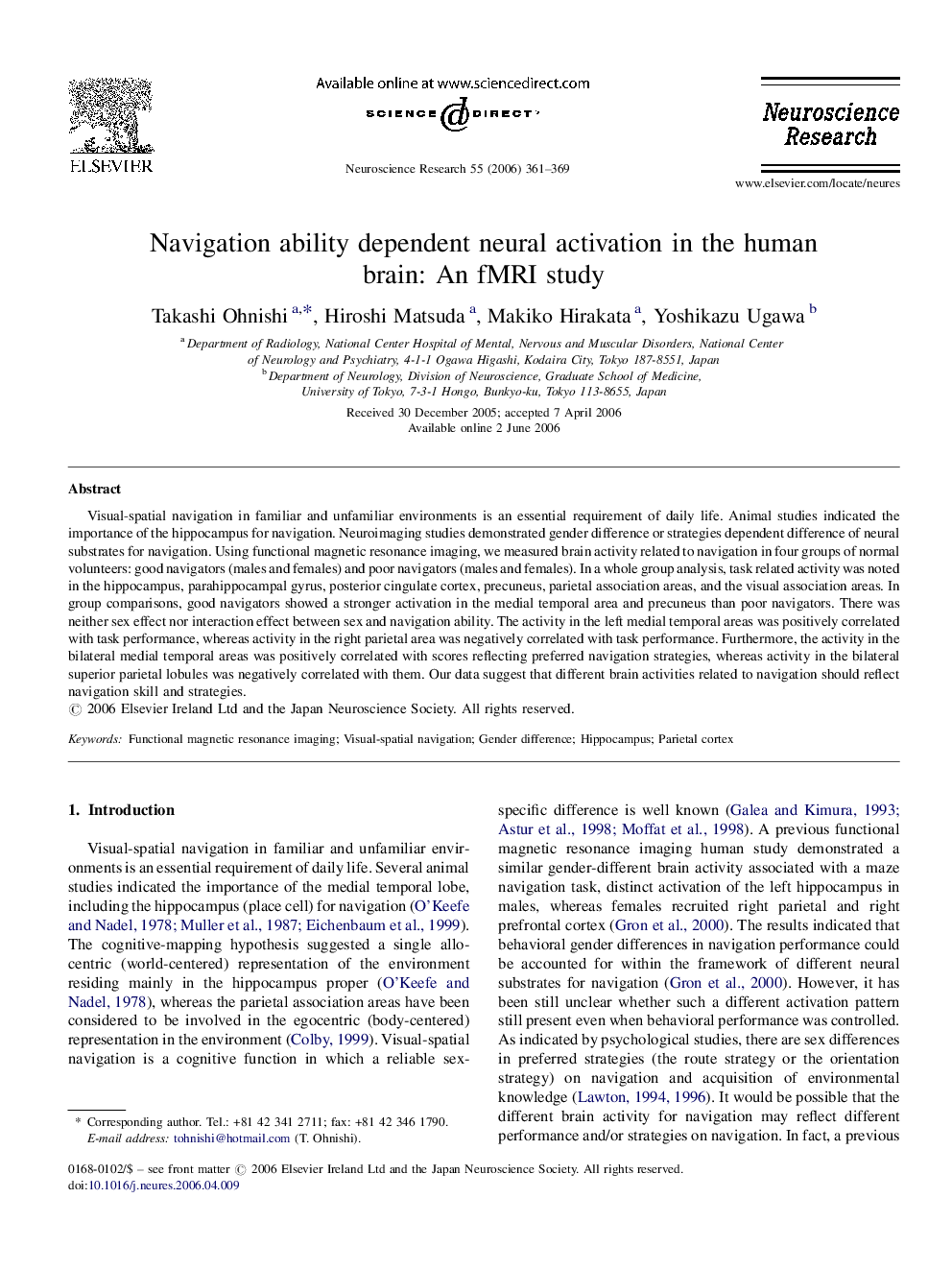| Article ID | Journal | Published Year | Pages | File Type |
|---|---|---|---|---|
| 4352549 | Neuroscience Research | 2006 | 9 Pages |
Visual-spatial navigation in familiar and unfamiliar environments is an essential requirement of daily life. Animal studies indicated the importance of the hippocampus for navigation. Neuroimaging studies demonstrated gender difference or strategies dependent difference of neural substrates for navigation. Using functional magnetic resonance imaging, we measured brain activity related to navigation in four groups of normal volunteers: good navigators (males and females) and poor navigators (males and females). In a whole group analysis, task related activity was noted in the hippocampus, parahippocampal gyrus, posterior cingulate cortex, precuneus, parietal association areas, and the visual association areas. In group comparisons, good navigators showed a stronger activation in the medial temporal area and precuneus than poor navigators. There was neither sex effect nor interaction effect between sex and navigation ability. The activity in the left medial temporal areas was positively correlated with task performance, whereas activity in the right parietal area was negatively correlated with task performance. Furthermore, the activity in the bilateral medial temporal areas was positively correlated with scores reflecting preferred navigation strategies, whereas activity in the bilateral superior parietal lobules was negatively correlated with them. Our data suggest that different brain activities related to navigation should reflect navigation skill and strategies.
